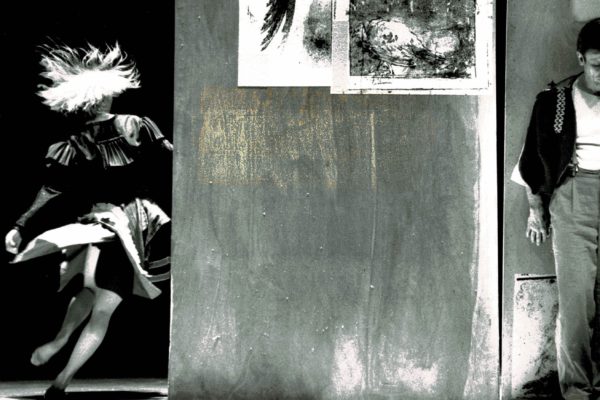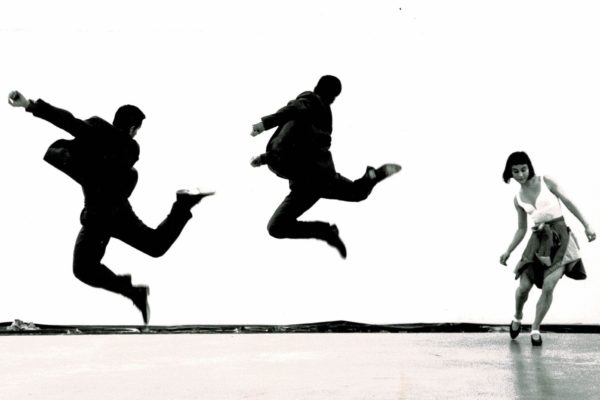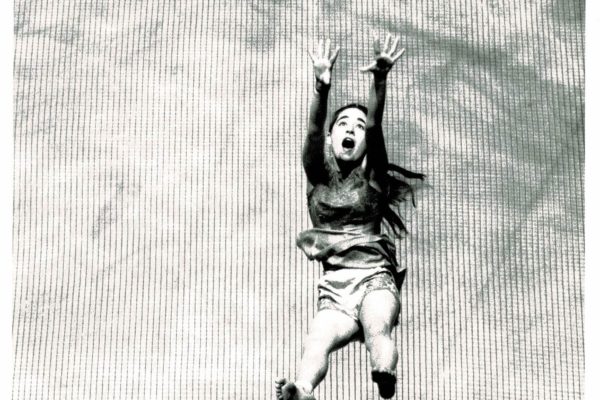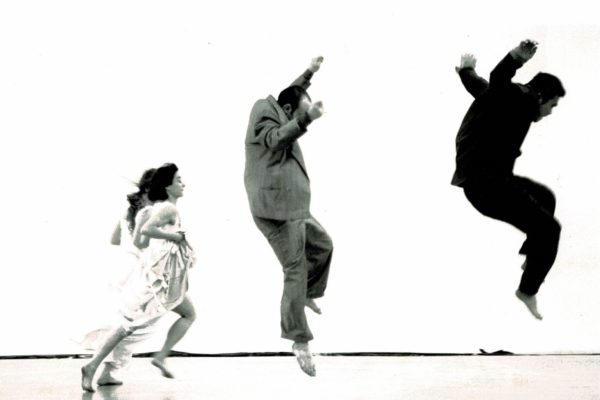Pulcinella
-
Year
1994 -
Choreography
Michèle Anne De Mey -
Musical Direction
George-Elie Octors -
Stage Designer and Costumes
Goury -
Light designer
Manuel Bernard -
Performers
Manolo Canteria, Gabriel Castillo, Pascale Clerbeaux, Philippe De Coen, Pascale Gigon, Kosi Hidama, Oliver Koch, Anouk LLaurens, Mark Lorimer, Monica Marti, Johanna O'Keeffe, Pierre Rubio
The show
One-act ballet for a small orchestra and three soloists.
In the style of Giambattista Pergolesi
Why stage Pulcinella …
After having created Châteaux en Espagne, and then, with greater haste Sonatas 555, I felt the need to turn to a musical work where de coherence would allow me a departure point and would impose the directional line of the performance.
For a long, the idea of ballet titillated and fascinated my wish to approach the argument in a completely personal way.
As always in such a situation, it is the abandonment of external signs which helped me opt for Pulcinella.but before speaking of the music of Stravinsky, the order which Diaghilev gave to the composer, and the reaction that the ballet would receive, it was not without calling to mind the different phases through which I had passed for the preceding performances: there was the question of Scarlatti, the jumping sheep, Picasso, Classicism, italianism.
All these details which, without wishing to establish a ridiculous parallelism allowed me to see that the choice of Pulcinella was not so innocent, and formed a logical and completely natural step in a way that one knows is sometimes complex. With the plot of Pulcinella it seemed I had found the dreamlike inspiration which had already provided my with a base for Sinfonia Eroïca inspired by Mozart’s “Bastien & Bastienne”.The music of Stravinsky had already helped me to find a supply of movements, imprunting on the bodies of the dancers counter-movements which agreed perfectly with my gestures. These rythmical breaks inevitably lead to breaks in the inspiration but never transform them into solemnity.
I like the respect for tradition set against this modernity which produces in Stravinsky a perfect tension, just as I would like to see in the ballet that I wanted to produce.
Today, it seems to me fundamental to be confronted with the presence of the orchestra and to be able to play from it and with is, the funny stories which come from the Comedia Dell’Arte tradition, as an intrinsic ingredient tied up with the art of ballet. It goes without saying that these new elements are for me a new game and that they challenge me, in an agreable way.
Michèle Anne De Mey
| Perfomers | Manolo Canteria, Gabriel Castillo, Pascale Clerbaux, Philippe De Coen, Pascale Gigon, Kosi Hidama, Oliver Koch, Anouk LLaurens, Mark Lorimer, Monica Marti, Joanna O'Keeffe, Pierre Rubio |
| Singers | Jean-Guy Devienne (Basse), Andrew Forbes-Lane (Ténor), Ingrid Stijsiger (Soprano) |
| Musicians | Orchestre de Bretagne |
| Music Analysis | Georges-Ellie Octors |
| Piano | Alain Franco |
| Flying trapeze training | Pascale Clerbaux, Philippe De Coen, Trapèze ASBL |
| Stage manager | Manuel Bernard |
| Régie | J.P. Costanziello, J.P. Verbanck |
| Costumes design | Micha, Sophie Regali, François Vachon |
| Music | Musiques traditionnelles d'Italie |
| Photo credit | Jorge Leon |
| Creation | Théâtre National de Bretagne |
| Production | Cie Michèle Anne De Mey |
| Co-production | Théâtre National de Bretagne, Théâtre de la Ville (Paris), Les Gémeaux scène nationale (Sceaux), Centre chorégraphique de la Communaité française de Belgique (Charleroi), Centre National des Arts (Ottawa) |
| In collaboration with | l'orchestre de Bretagne |
| With the support of | Ministère de la Culture des Affaires Sociales (service de la Danse et de la Musique), de la COCOF et du CGRI |



